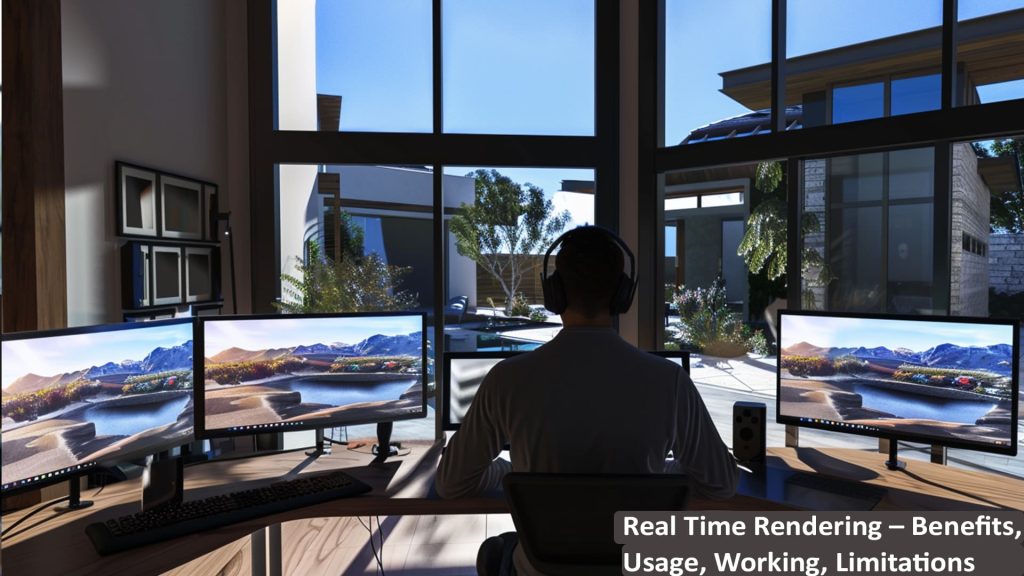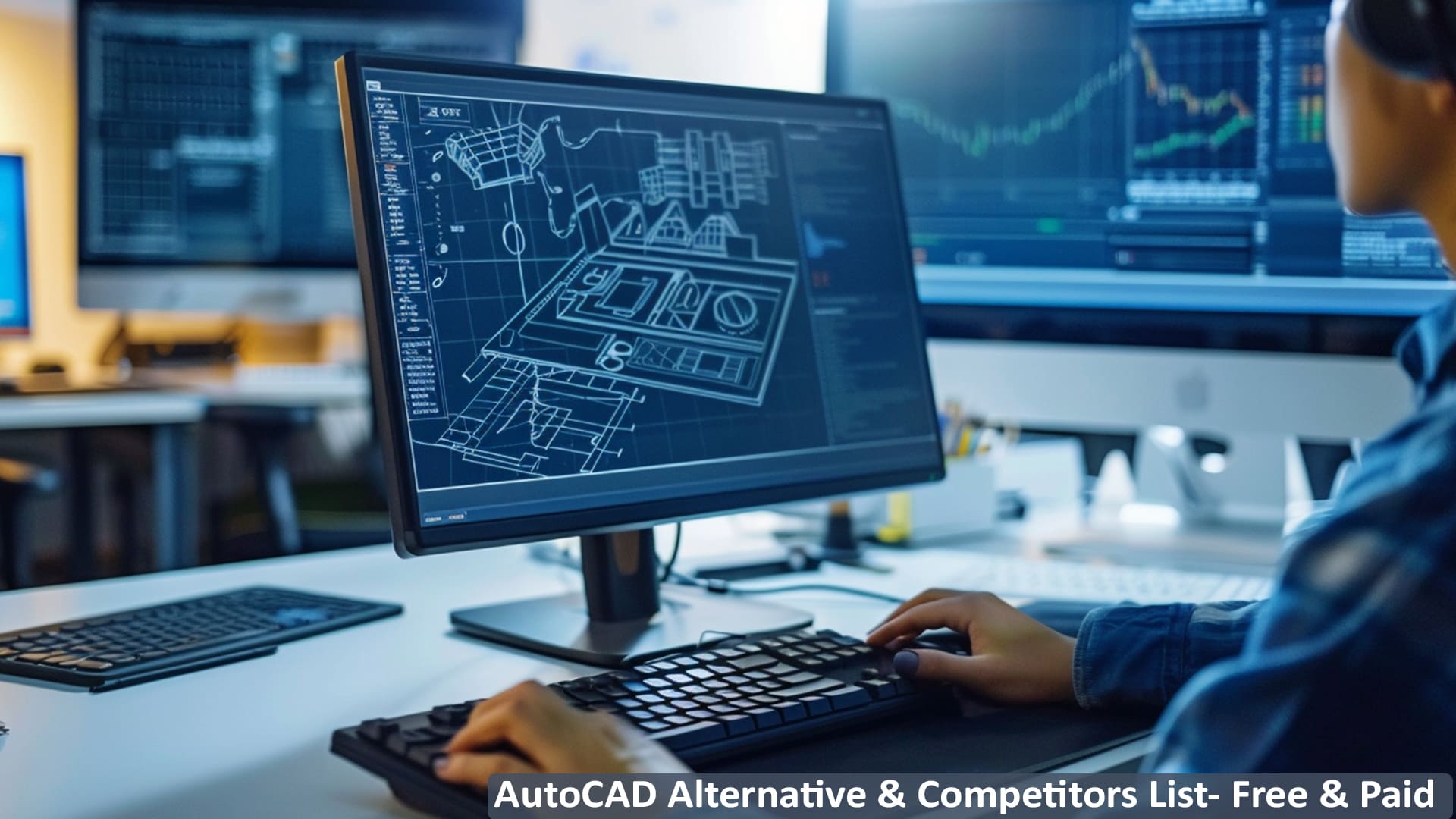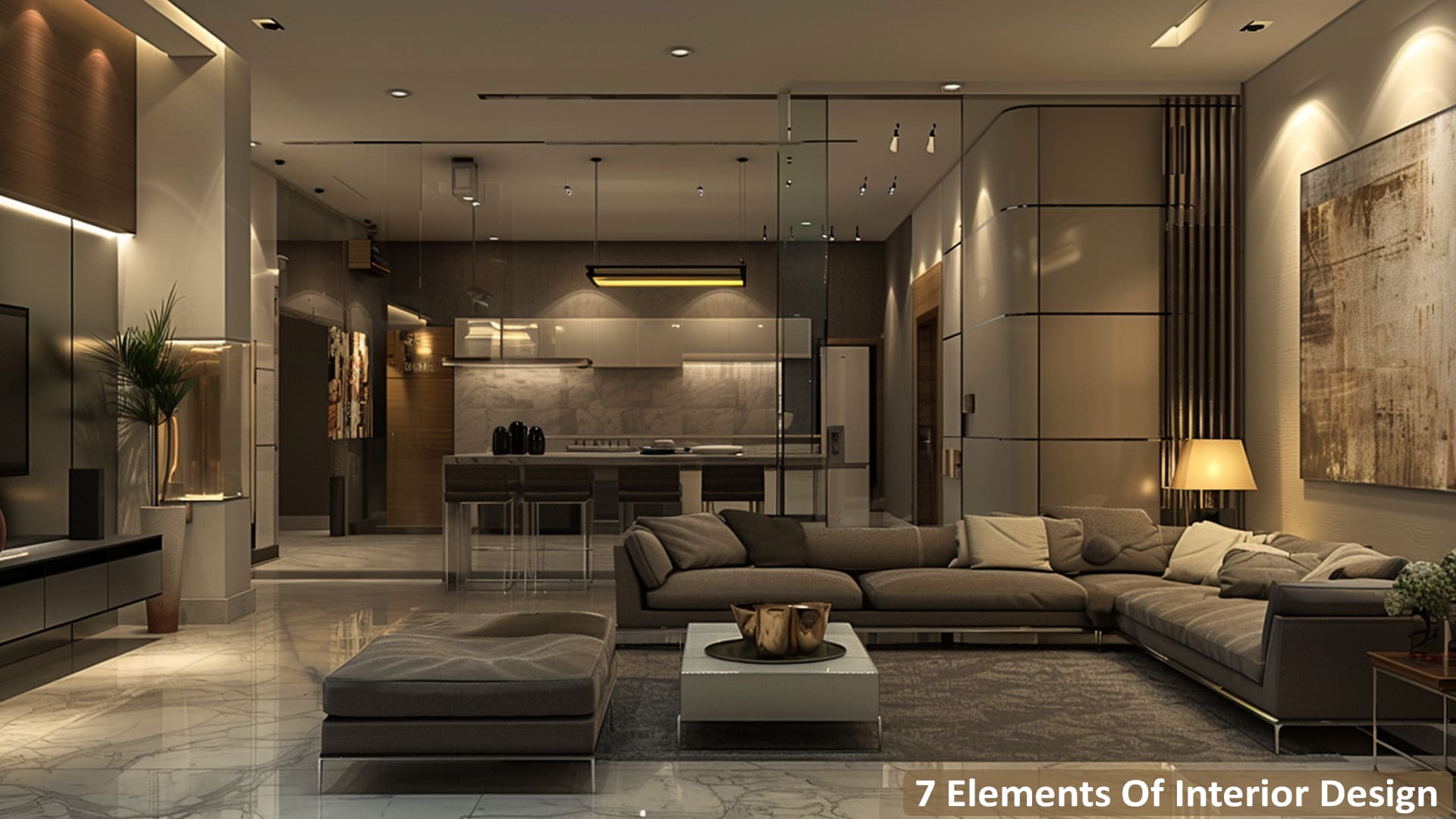Real Time Rendering is not a new concept. We all have experienced the same in video games where each scene is rendered in milliseconds and appears photorealistic to the user. Just like this, rendering in real time is now quickly adapted in the architecture industry by architects, designers etc. to showcase the designs in real-time to the clients. After all, what matters is client satisfaction. Renderspoint-one of the leading 3D architectural visualization firms helps you get through the details of this concept deeply. Keep reading to know more.
What is Real Time Rendering
Real Time Rendering is a technique of creating high-speed animations using CGI that are created in real time. Unlike traditional rendering, here the images are not pre-made, rather they are created and displayed “on-the-fly” or real-time. With technological advancements, the latest and advanced hardware and software enable the creation of renders at high-frame rates. This allows the user to feed the input and the real-time renders images get ready on the spot. These renderings are created at a minimum speed of 24 fps (frame per second), and this means updating an image approximately 30 times in one second.
Benefits of Real Time Rendering
Rendering in real time is used in industries that require interactive and immersive applications that boost engagement. This technique dynamically reduces the latency rates and enables the construction of high-speed graphics. Let us have a look at the benefits of this revolutionary technique.
1. Seamless Speed, Interactivity and Workflows – Advancements in 3D rendering technology have resulted in faster iteration of the images that boosts greater productivity and significantly offers time savings. Architects and space designers can easily satisfy their clients in just one presentation by utilizing this powerful technique. All the concerns and queries of clients can be addressed simultaneously without any revisions. This speeds up the approval process as well.
2. Explore all Possibilities & Beyond – Real time animations for walkthroughs of the buildings will propel more immersive and interactive experiences. Rendering in real time boosts engagement and offers better design visualizations. The user can explore all possibilities like viewing the building in day, night or in any climate or neighbourhood.
3. Cost & Time Savings – Apart from design flaw identification, real time customization can be done. All stakeholders can be present at the same time and can share the feedback. The tweaks or the feedback can be implemented instantly in real time which will avoid costly revisions that are made during production or postproduction.
4. Efficiency & Flexibility – Working on real time rendering eliminates the use of static pre-rendered images that are actually time-consuming. Indeed, it makes working on complex projects more efficient and optimized. As customization or changes can be implemented in real time, the user can experiment with various things of their choice. This ability to make changes instantly enables the user to make quick, better, and informed decisions.
Where is Real Time Rendering Used?
Rendering in real time is an innovative technique that offers the unimaginable potential to infuse creativity and gain better control over visualization. Have a look at where and who all use this amazing technique.
1. Companies & Professionals: Competitive Edge, More Money, Brand Power – For companies that are looking to gain a competitive edge over their competitors and establish themselves as a brand, rendering in real time will help make a major difference. Big architectural firms can create some short and engaging real time rendering animations in the form of presentations. The captivating visuals will influence the emotional quotient and impress their clients. Thereby the prospective leads will get converted into clients. Hence more profits, more money.
2. Industries such as Architecture, Automotive, Media and Entertainment – Advanced rendering software enables 3D artists, animators, and other designers an innovative workflow to create immersive films, video games, AR/VR experiences for architectural design visualization. Flaws or errors can be identified before the construction begins. The animations/videos also boost sales, training, and marketing endeavours.
How does Real Time Rendering Work?
3D rendering process involves creating a 2D photorealistic image from a 3D model. In real time rendering, there are three main stages. Have a look.
1. Geometry Stage – In this stage, the objects or the environment are virtually generated by a program by pushing details such as dimension, position, and shape. It is like a 3D model that is made by defining faces, edges, and vertices in the form of polygons of objects.
2. Shading Stage – Now comes the stage where the objects created in the geometry stage will be made to look realistic. This process involved giving colour depending on the material, texture of the object, lighting, camera angles etc.
3. Rasterization Stage – The final rasterization stage uses the output of the shading stage and converts it into pixels. This is the final image that will be seen on the screen. The light and camera angles are set to create photorealistic images by working on the reflections and adjusting shadows.
Limitations of Real Time Rendering
So, now you have understood the immense power of real time rendering. This aids in better visualization but also gives the control to the users to modify and customize according to them. Doing this in an architecture industry where giving complete control to users would mean playing with design fundamentals. The end-users may not understand the basics of a building design and the consequences can be vulnerable.
Also, you need much more advanced hardware and software, which definitely is an added expense. This can certainly be afforded by big companies but for startups or small companies, this software is way out of their budget. Even if you managed to purchase, you need to hire skilled specialists to operate. Now, this can again be more challenging than normal 3D rendering.
Winding Up
Real time rendering has completely revolutionized the digital landscape by providing opportunities to create stunning imagery, seamless animations, and immersive environments. This has dramatically added a lot to the creative bucket of designers, developers, and artists. Irrespective of the industry, rendering mages in real time helps bring ideas to life in a more effective, efficient, speedier, detailed, and accurate way.
Renderspoint is the leading 3D architectural visualization studio offering high-quality rendering services for all your still and animation needs. Contact us today at sayhello@renderspoint.com and take your dream design concepts to newer heights.








